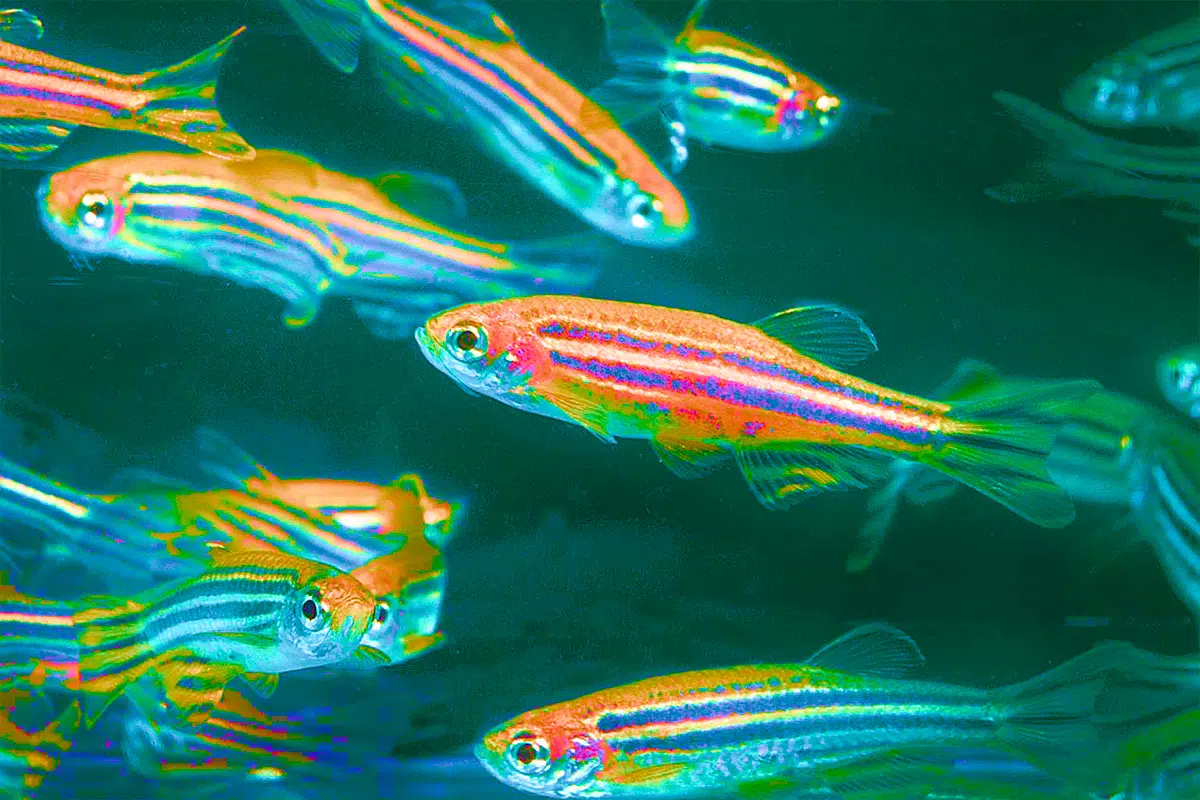Dr. Ana Luchiari has baffled, poisoned, distressed, and terminated countless fish in the name of science.
Her test subjects in the Laboratory of Ornamental Fish of the Federal University of Rio Grande do Norte, Brazil—or “the Fish Lab” for short—might find themselves sleep-deprived, drunk, caffeinated, asphyxiated, or exposed to toxic coal byproducts and climate change-inspired temperature increases. “There’s no way to feel good doing all this,” the zoology and physiology Ph.D. tells DoubleBlind. “When I go to heaven, I am going to find all the fish I have killed waiting for me.”
Some of Dr. Luchiari’s experiments end badly for the fish, but some appear to relax them, including one experiment that involved dosing zebrafish with ayahuasca. She and her team run innovative experiments on Danio rerio, a small fresh water fish often found in aquariums. They helped establish them as an effective model for human behavior and physiology in the Global South. So how did these fishies end up in an ayahuasca study?

Small studies suggest the psychedelic brew derived from Banisteriopsis caapi vines and Psychotria viridis leaves may be able to treat treatment-resistant depression. Zebrafish trials make it cheap and safe to test the risks and rewards of substances like ayahuasca. Luchiari estimates it would cost 10 times as much to experiment on rats. Amid historic research budget cuts under leaders like Donald Trump and Brazilian President Jair Bolsonaro, this value frees scientists to take bold intellectual risks.
Zebrafish studies work thanks to a database built on four decades of research and special software called ZebTrack that researchers use to decode their subjects’ behavior. When zebrafish see a predator, they typically swim faster, float closer to the bottom of their tank, or freeze in place, so these behaviors are associated with fear and anxiety. Researchers use these data points to approximate how the fish feel in different situations.
Luchiari’s studies already indicate that low doses of ayahuasca reduce anxiety-like behavior, while high doses increase it. Traditional ayahuasca rituals often involve drinking the tea repeatedly, so Luchiari is studying how chronic exposure affects zebrafish. So far, it correlates to a negative impact on memory. She says ongoing research with zebrafish embryos could indicate the level of risk ayahuasca poses to pregnant people.
Luchiari predicts ayahuasca will be available as a pill at drugstores within 15 years. The Fish Lab’s findings will be part of the foundation of safety protocols doctors will use to recommend safe treatments.
How to Grow Shrooms Bundle
Take Both of Our Courses and Save $90!
However, the Fish Lab’s research has limitations. Shamanic practices center spiritual growth, but this area may be impossible to study in fish. “The fish do not have any spiritual experiences,” says Luchiari.
Today, access to ayahuasca is locked behind a paywall of expensive retreats that require travel or underground ceremonies that can be risky if you don’t know the right questions to ask. Grifters are already taking advantage of curandero culture, and Shipibo shaman Guillermo Arrévalo warns against “false shamans” who mix dangerous toxins with the traditional brew. Psychedelics like ayahuasca are projected to grow to a $6.85 billion industry by 2027, so there’s a public interest in mitigating these safety risks.
Institutions like Luchiari’s Fish Lab will determine how psychedelic plant medicines become available as they spread beyond the Indigenous communities who have used them since time immemorial.

DoubleBlind is a trusted resource for news, evidence-based education, and reporting on psychedelics. We work with leading medical professionals, scientific researchers, journalists, mycologists, indigenous stewards, and cultural pioneers. Read about our editorial policy and fact-checking process here.

DoubleBlind Magazine does not encourage or condone any illegal activities, including but not limited to the use of illegal substances. We do not provide mental health, clinical, or medical services. We are not a substitute for medical, psychological, or psychiatric diagnosis, treatment, or advice. If you are in a crisis or if you or any other person may be in danger or experiencing a mental health emergency, immediately call 911 or your local emergency resources. If you are considering suicide, please call 988 to connect with the National Suicide Prevention Lifeline.



